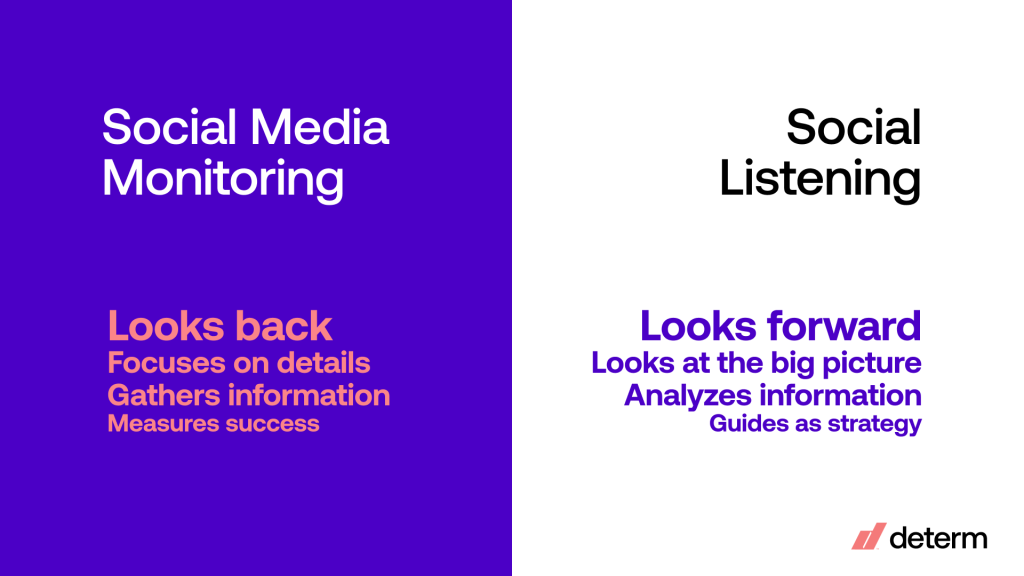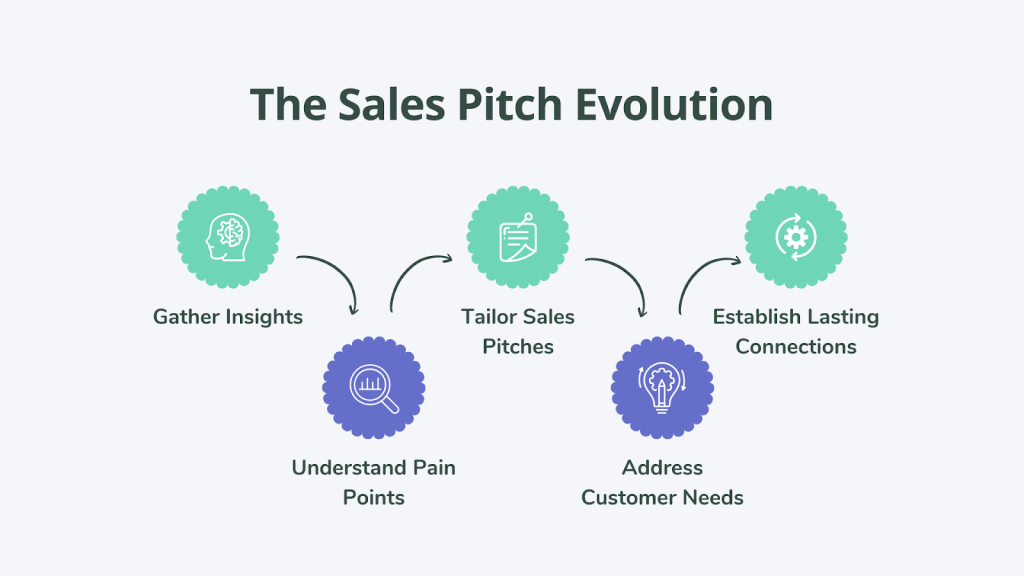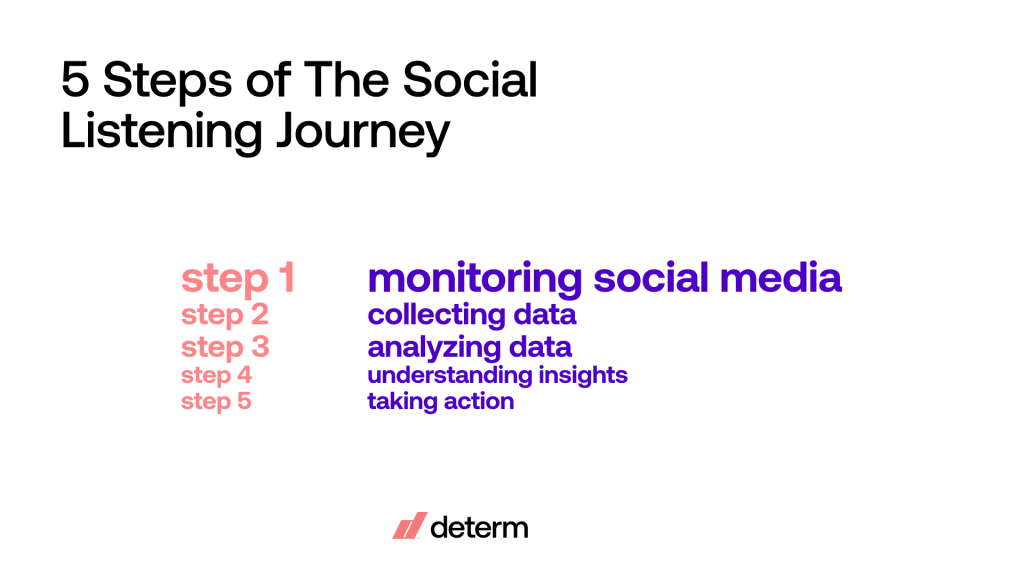Are you looking for smarter ways to drive greater product and sales insights? Social media monitoring may be the answer.
By staying current on your brand’s conversation online, you can gain an invaluable understanding of customer needs and preferences. Using robust analytics solutions that help track what people say – both positive and negative – about your products and services, you can create tailored strategies for further success.
💡 Read Media Monitoring: The Ultimate Guide
In this blog post, we’ll discuss specific ways social media monitoring can inform product & sales teams and help them make more insightful decisions.
Let’s dive in!
What is Social Media Monitoring?
Have you ever wished you could be a fly on the wall, listening in on what people are saying about your brand? That’s where social media monitoring shines.
It involves keeping tabs on social media platforms to understand what’s being said about your brand, competitors, and industry.
It’s like having a telescope that lets you zoom into conversations happening across various platforms. Whether it’s Twitter, Facebook, LinkedIn, or Instagram, you monitor social media channels for mentions, trends, and discussions.
- Key Platforms: Twitter, Facebook, LinkedIn, Instagram, etc.
- What to Monitor: Mentions, hashtags, industry terms, competitor names.
Read How To Write A Social Media Report: Guide For Beginners
The Power of Social Listening
Now, you might be thinking: “Is monitoring the same as listening?” Great question! While they’re related, social media listening takes it a step further.

Social media listening is about analyzing the data you collect and then using those insights to create a strategy that benefits your brand. It’s not just about watching and collecting; it’s about understanding and acting. By engaging in social media listening, you are essentially putting your ear to the ground of the digital world.
This doesn’t just provide your product and sales teams with invaluable insights – it can also help maintain a positive brand image.
How? By allowing you to respond swiftly and thoughtfully to customer feedback and concerns.
Here’s what you gain with social media listening:
- Understand customer needs and preferences.
- Identify trends and market opportunities.
- Respond effectively to positive and negative mentions.
- Inform product development and sales strategies.
Social media listening transforms the raw data collected through monitoring into actionable insights. These insights can empower your product and sales teams, ultimately driving success and cultivating a positive brand image.
How Can Social Media Monitoring Inform Your Product and Sales Teams?
Looking to outsmart the competition and drive superior insights for your product and sales teams? Here’s where social media monitoring steps in. It’s not just a tool for marketing teams anymore, but a strategic asset that can unlock a wealth of information. Withour further ado, here’s how can social media monitoring inform your product and sales teams.
1. Understanding Customer Needs
Picture this: you have a direct line into the thoughts and feedback of your target audience. With social media monitoring, this isn’t just a pipe dream. It’s reality.
By tuning into conversations about your brand, you’re tapping into authentic, unfiltered customer feedback.
This is where you’ll find the key to:
- What your customers love
- What they want to see more of
- Where they think there’s room for improvement
2. Identifying Trends
In the digital age, trends come and go at lightning speed. With social media monitoring, you can stay ahead of the curve.
Spotting new buzzwords, tracking shifts in consumer behavior, or identifying emerging preferences – it’s all possible when you’re plugged into the pulse of social media.
Read Predicting Industry Trends: The Strategic Value of Media Monitoring Tools
3. Gaining Competitive Insights
Don’t just limit social media monitoring to your own brand reputation. Extend it to your competitors’ activities too.
From their victories to their missteps, every piece of information is valuable. In the grand chess game of business, it’s these competitive insights that will help you make the right moves and stay one step ahead.
These valuable insights include:
- Competitors’ successful strategies
- Areas where they’re falling short
- Opportunities to differentiate your brand
4. Enhancing Sales Strategies
And let’s not forget about sales strategies. By understanding your customers’ pain points through social media monitoring, your sales team can tailor their pitches to address these issues directly.

Plus, social media monitoring can be an effective way to identify potential leads.
Let’s harness the power of social media monitoring to supercharge your sales strategies. After all, a solution to any problem is always welcome.
Practical Tips for Effective Social Media Monitoring
Social media monitoring can be a game-changer for your business, but like any strategy, it needs to be executed properly. Using the right social media monitoring tools, coupled with keen social listening, can make all the difference.
Tools and Techniques
It’s crucial to pick the right social media monitoring tools for your business. These tools should align with your goals and offer features that help you determine what’s important in the sea of social media conversations.
Some popular social media monitoring tools include:
- Determ
- Hootsuite
- Brandwatch
- Mention
When determining which tool to use, consider:
- Usability: Is it user-friendly and easy to navigate?
- Data Coverage: Does it monitor the platforms your audience frequents?
- Real-time Monitoring: Can it provide insights as conversations are happening?
Social media monitoring tools are your eyes and ears. Choosing the right tools and using them effectively is crucial for social listening.
Analytics and Reporting
The insights derived from social media tools are only as good as your understanding of them. This is where analytics and reporting come in.
- Data Analysis: Break down the data into comprehensible metrics. This includes sentiment analysis, trend identification, and audience demographics.
- Create Reports: Generate concise and informative reports that provide insights at a glance. These reports should be shared with relevant teams to inform decision-making.
- Actionable Insights: Identify actionable insights from the reports. This could be anything from changing a product feature to using different messaging in your marketing.
Analytics and reporting transform the raw data from your social media monitoring tools into a treasure trove of insights. These insights, when integrated into your strategy through social listening, can drive significant improvements in product development and sales performance.
With the right tools and a strong focus on analytics, your social media monitoring can catalyze business growth. It’s not just about watching the conversation; it’s about understanding it and using that knowledge to your advantage.
Challenges and How to Overcome Them
Navigating the terrain of social media monitoring is no cakewalk, and a few challenges are to be expected.
Here, we’ll dissect three major challenges: information overload and data privacy, and provide you with actionable insights to tackle them.
Information Overload
Imagine you’re standing in the middle of a busy city, trying to pick out meaningful conversations from the chaos. This is like the information overload you experience in the social media world.
The key is filtering. Utilize your social media monitoring tool to hone in on the specific conversations that matter. Be strategic in selecting keywords, hashtags, or mentions that align with your brand’s goals.
Ensuring Data Privacy
Next up, let’s address the elephant in the room – data privacy. In the realm of social media, data privacy is not just important, it’s sacrosanct.
- Transparency: Be upfront with your audience about why you’re collecting data. Explain that it’s aimed at enhancing their experience.
- Respect for Privacy Settings: If a user has set their profile to private, it’s important to respect this choice.
- Responsible Data Handling: Be cautious and considerate in handling the data. Use it exclusively for the stated purpose and ensure it’s not shared irresponsibly.
By embracing these guiding principles, you can streamline your journey in the realm of social media monitoring.
Dealing with Negative Feedback
The third hurdle in social media monitoring is grappling with negative feedback. When your brand encounters criticism, it’s like a sudden downpour on your parade.
Here’s how to take this in stride:
- Quick and Calm Response: Act swiftly, but stay cool as a cucumber. Acknowledge and apologize if necessary.
- Move to Private Channels: For intricate issues, suggest taking the conversation to direct messages or email.
- Evolve Through Feedback: View criticism as a tool for growth. Adapt and fine-tune your approach.
Key Takeaways
As we wrap up this deep dive, let’s bring together everything we’ve learned about how social media monitoring can truly empower your product and sales teams.

Check out these key takeaways:
- By staying on top of social media, your product team can uncover valuable customer insights. This enables you to create products that truly resonate with your target audience.
- Real-time insights from social media can give your sales teams a powerful edge. Discover hot leads and trends to supercharge your sales figures.
- Social monitoring helps both product and sales teams watch the competition’s moves. It empowers them to learn from others’ successes (and failures) for even smarter strategies.
- Monitoring opens the door to direct feedback for your product team. This allows them to gather valuable insights that can drive product improvements and innovation.
- It’s not just about making sales—it’s about nurturing relationships. Leverage social monitoring to build lasting connections with customers and turn them into loyal repeat buyers.
To Sum It Up
Monitoring social media channels is an invaluable tool for your product and sales teams. The insights you gain hold the power to not just transform your products, but also revolutionize how you engage with your audience and drive sales.
But remember, it’s not a one-size-fits-all solution; it demands continuous adjustment and attention.
By tuning into the digital chatter, your product team can create offerings that align perfectly with customer desires, while your sales team can forge deeper connections with the audience.
This dynamic synergy has the power to cultivate a fiercely loyal customer base, transforming them into passionate brand advocates.
So, equip your product and sales teams with the power of social media monitoring, and watch as they bring your brand to new heights!
Jae Hale is the founder and voice of byjaehale.com. With a focus on AI, SEO, and digital entrepreneurship, she effortlessly dissects complex topics, captivating readers with flair and precision. Drawing from her hands-on experience in the tech and start-up space, Jae’s insightful articles are an absolute must-read for tech enthusiasts and aspiring entrepreneurs eager to leave their digital footprints.


